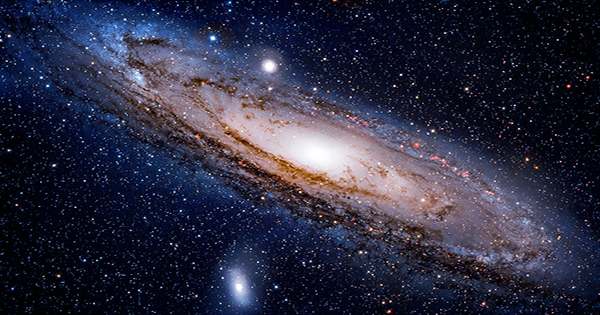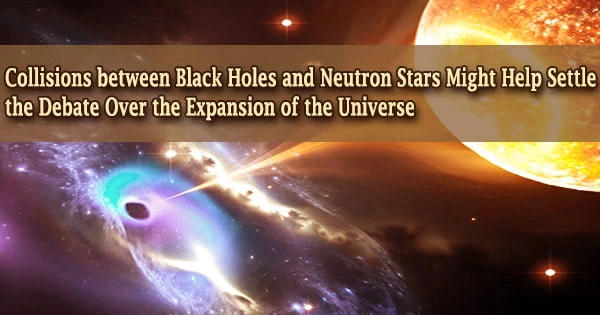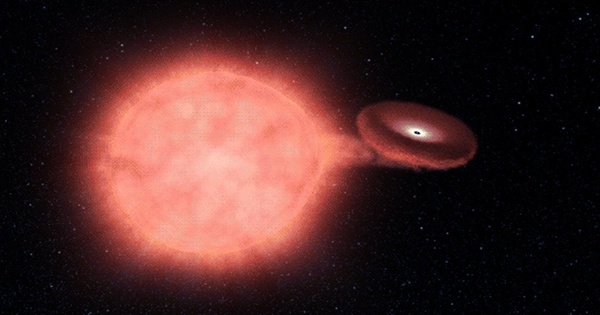One of the lowest-mass planets whose images have been directly recorded has been found by astronomers utilizing the W. M. Keck Observatory on Maunakea, Hawai’i Island. They were able to determine its mass as well as that its orbit resembles that of the large planets in our own solar system.
The planet, known as AF Lep b, is one of the first ever to be found using a method known as astrometry. Astrometry examines the small changes of a host star over a long period of time to assist astronomers in determining whether difficult-to-see orbiting companions, including planets, are gravitationally pulling at it.
The study, led by astronomy graduate student Kyle Franson at the University of Texas at Austin (UT Austin), is published in The Astrophysical Journal Letters.
“When we processed the observations using the Keck II telescope in real time to carefully remove the glare of the star, the planet immediately popped out and became increasingly apparent the longer we observed,” said Franson.
AF Lep b circles AF Leporis, a young sun-like star located 87.5 light-years away, and is nearly three times as massive as Jupiter, according to direct photos taken by Franson’s team. Beginning in December 2021, they began taking a series of deep photos of the planet; since then, two additional teams have also taken images of the same planet.
“This is the first time this method has been used to find a giant planet orbiting a young analog of the sun,” said Brendan Bowler, an assistant professor of astronomy at UT Austin and senior author on the study. “This opens the door to using this approach as a new tool for exoplanet discovery.”
Imaging planets is challenging. We only have about 15 examples, and we think this new ‘dynamically informed’ approach made possible by the Keck II telescope and NIRC2 adaptive optics imaging will be much more efficient compared to blind surveys which have been carried out for the past two decades.
Kyle Franson
An orbiting planet causes a star’s location to bob around the center of mass of the planetary system, despite having a far smaller mass than its host star. This change in a star’s location in the sky in relation to other stars is used by astrometry to deduce the presence of planets in orbit.
Franson and Bowler identified the star AF Leporis as one that might harbor a planet, given the way it had moved during 25 years of observations from the Hipparcos and Gaia satellites.
The UT Austin team used the Near-Infrared Camera 2 (NIRC2) Vector Vortex Coronagraph of the Keck II Telescope, which suppresses light from the host star so the planet could be seen more clearly, along with the adaptive optics system of the Keck Observatory, which corrects for fluctuations brought on by turbulence in Earth’s atmosphere. About eight times the distance between the Earth and the sun away, AF Lep b is about 10,000 times fainter than its host star.
“Imaging planets is challenging,” Franson said. “We only have about 15 examples, and we think this new ‘dynamically informed’ approach made possible by the Keck II telescope and NIRC2 adaptive optics imaging will be much more efficient compared to blind surveys which have been carried out for the past two decades.”
The two most common methods for discovering extrasolar planets involve measuring minute variations in the frequencies of starlight as a result of the planet pulling the star back and forth along the direction to Earth and observing slight, periodic dimming of the starlight if a planet happens to regularly pass in front of the star like a moth spiraling around a porch light.
Both methods tend to work best with large planets orbiting close to their host stars, and both methods are indirect: we don’t see the planet, we only see how it influences the star.
Astronomers may be able to locate extrasolar planets that were previously difficult to locate using traditional techniques because they were too far from their host star, had too low masses, or didn’t have orbits that were edge-on as seen from Earth. This is done by combining direct imaging with astrometry.
The ability to directly quantify a planet’s mass, which is challenging with other techniques at large orbital distances, is another advantage of this method.
Bowler said the team plans to continue studying AF Lep b.
“This will be an excellent target to further characterize with the James Webb Space Telescope and the next generation of large ground-based telescopes like the Giant Magellan Telescope and the Thirty Meter Telescope,” Bowler said. “We’re already planning more sensitive follow-up efforts at longer wavelengths to study the physical properties and atmospheric chemistry of this planet.”
















